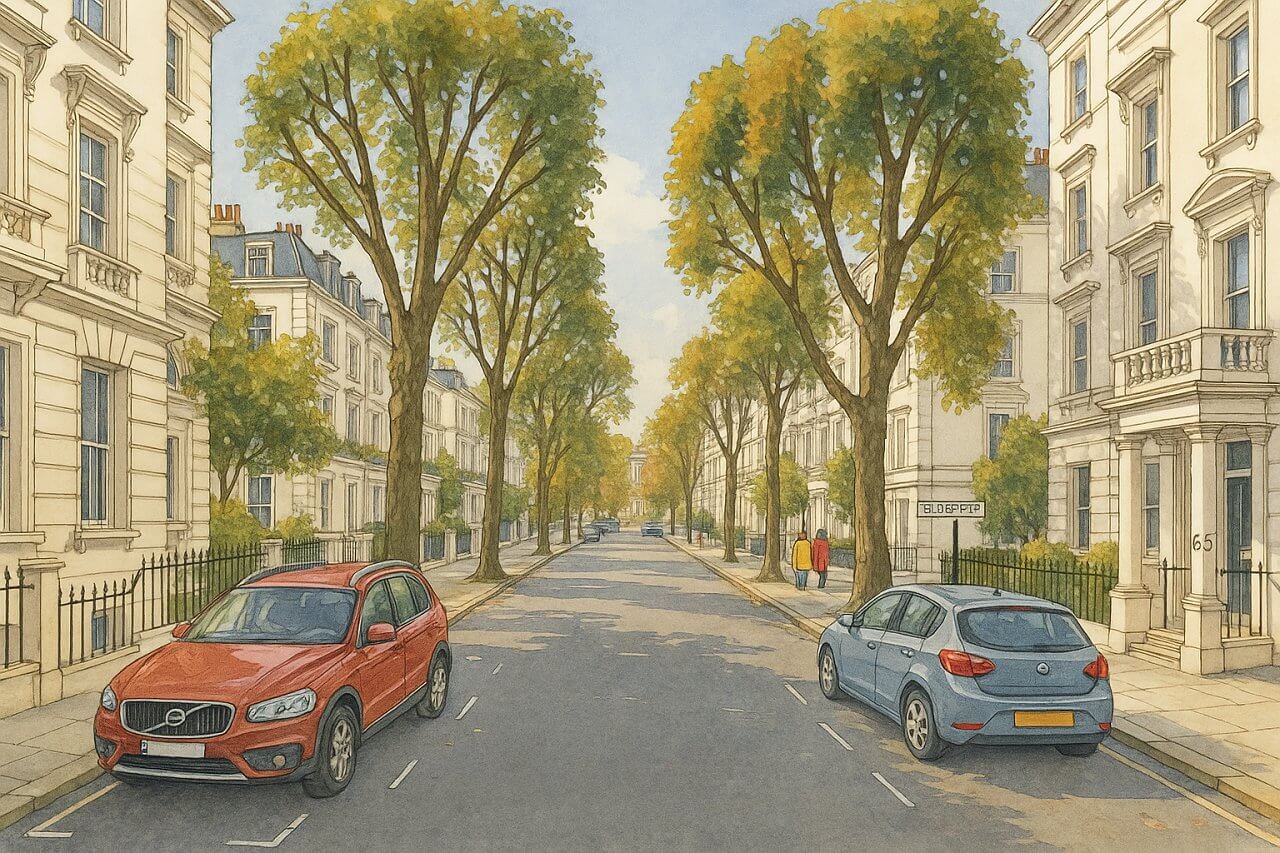
Gloucester Street, London
Gloucester Street is a peaceful residential road in Pimlico, a district within the City of Westminster in Central London. Although once a through route linking Belgrave Road to Sutherland Street and Lupus Street, it is now a quiet cul-de-sac with both ends converted to pedestrian walkways. The street maintains a charming Georgian and Victorian character and offers a tranquil retreat just moments from some of London’s busiest thoroughfares.
Where Is Gloucester Street?
Gloucester Street lies in Pimlico, just west of the River Thames and south of Victoria Station. It bends from Denbigh Street in the northeast and previously ran all the way to Lupus Street in the southwest. Today, its road access begins and ends within a short span, with pedestrian access available through both ends.
Street Length and Layout
Gloucester Street is relatively short, measuring approximately 300 metres (984 feet) in length. With both its original endpoints blocked to vehicular traffic, the street now functions mainly as a residential lane. Pedestrians can still walk its entire length, with access via small paved paths that connect it to the surrounding road network.
Streets connected to Gloucester Street
- Alderney Street
- Cambridge Street
- Cumberland Street
- Denbigh Street
- St George's Drive
- Winchester Street
History of Gloucester Street
The street was laid out during the 1840s as part of the broader Pimlico grid development led by the Grosvenor Estate. This grand vision transformed former marshland into orderly residential terraces catering to the growing middle class of Victorian London.
Gloucester Street likely took its name from the Duke of Gloucester, a title associated with British royalty. The naming convention aligned with the nearby use of royal and noble names such as Warwick Way, Belgrave Road, and Denbigh Street. Though precise documentation on its naming year is limited, it appears on maps dating back to the 1850s.
How to Pronounce "Gloucester"
The name Gloucester is often mispronounced by visitors unfamiliar with British place names. Despite its spelling, it is pronounced "GLOSS-ter", with the middle syllable dropped. In the International Phonetic Alphabet (IPA), the pronunciation is written as /ˈɡlɒstə/  . This follows a common pattern in English place names, where certain letters are silent or elided.
. This follows a common pattern in English place names, where certain letters are silent or elided.
Character and Architecture
The street retains much of its original Victorian charm, with stucco-fronted terraced houses and mature street trees. The homes are typically four to five storeys high, many with ornate cornices and elegant iron railings. Several buildings have been subdivided into flats, while others remain as single-family homes. The ambiance is peaceful and village-like, with minimal through-traffic and a sense of seclusion.
Nearby Sights and Attractions
While Gloucester Street itself is a quiet residential street, its location puts it within walking distance of some notable London landmarks and attractions:
- Tate Britain – One of London’s most prestigious art galleries, located a 10-minute walk southeast.
- St George’s Square – A rare garden square along the Thames, offering open space and riverside views.
- Lupus Street shops – Provides local cafes, grocers, and amenities for residents.
- Belgrave Road – A major Pimlico road with budget hotels and eateries.
Property and Real Estate
As of May 2025, real estate on Gloucester Street is highly sought after. Flats in converted Victorian terraces generally range from 500 to 1,200 sq ft (approximately 46 to 111 sq metres). One-bedroom flats typically sell for between £600,000 and £850,000, while larger two-bedroom flats can reach over £1.3 million, depending on condition and amenities.
Compared to the London average, which in early 2025 stands at around £530,000 for all property types, Gloucester Street is significantly above average due to its location, architecture, and conservation status.
Transport Links
Nearest Underground Stations
- Pimlico Station (Victoria line) – Around a 6-minute walk to the southeast.
- Victoria Station (Victoria, Circle, District lines and National Rail) – About 12 minutes on foot to the north.
Nearby Bus Stops
- Lupus Street – Served by bus routes 24, C10, and 360.
- Belgrave Road – Served by route 24, connecting Pimlico to the West End and Hampstead.
Fun Fact
One of Gloucester Street’s lesser-known quirks is its cameo in several mid-century films and television series due to its classic London look. It has featured in background shots for period dramas and detective series portraying Victorian or early 20th-century London.
Quick Facts
- Location: Pimlico, City of Westminster
- Length: Approx. 300 metres (984 feet)
- Historical Era: Laid out in the 1840s as part of Pimlico’s Victorian development
- Name Origin: Likely named after the Duke of Gloucester; name appears on maps from the 1850s
- Pronunciation: "GLOSS-ter" /ˈɡlɒstə/
- Character: Residential, peaceful, with Victorian terraces and little traffic
- Nearby Sights: Tate Britain, St George’s Square, Lupus Street shops
- Property Prices (May 2025): £600,000–£1.3 million; 500–1,200 sq ft (46–111 sq m)
- Nearest Tube Stations: Pimlico (Victoria line); Victoria (Victoria, Circle, District lines, and rail)
- Bus Services: Routes 24, C10, 360 from Lupus Street and Belgrave Road
- Fun Fact: Occasionally used as a filming location for period TV dramas
Map of Gloucester Street, London

Painting of Gloucester Street, London (View image in full size)